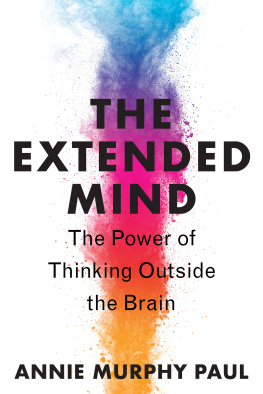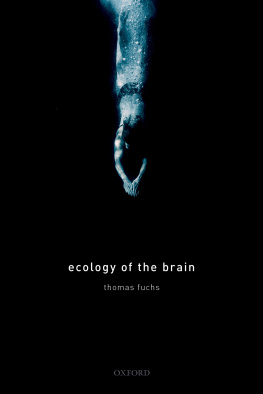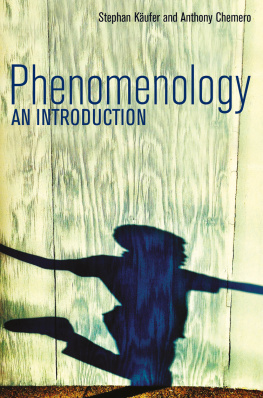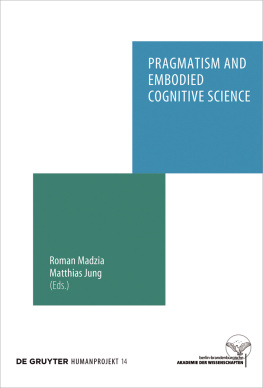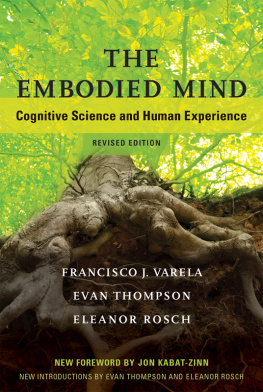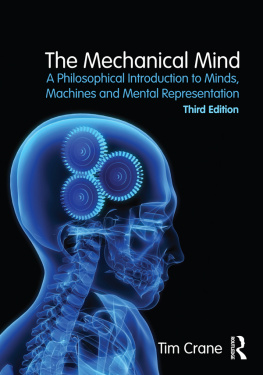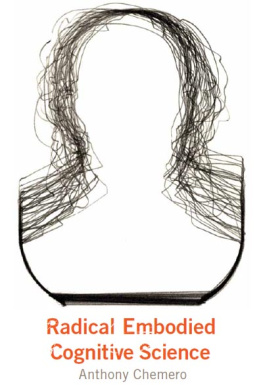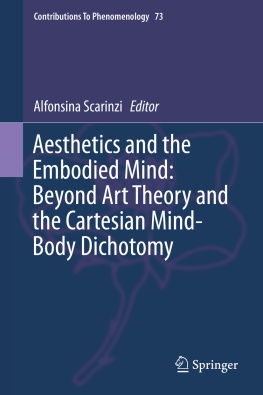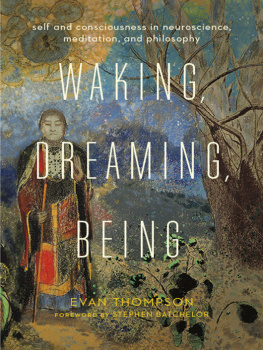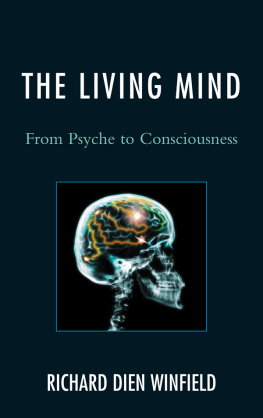From Extended Mind to Embodied Phenomenology
Mark Rowlands




ix
I suppose that for a book entitled The New Science of the Mind there isn't, in fact, a lot of science in it; and some of the science that does find its way in isn't particularly new. The underlying reason is that the expression "new science" is as much aspirational as descriptive. There is, as yet, no new science, not understood as something comparable to mature cognitive science in its classical guise. Rather, "new science" picks out a cluster of related views that are emerging, or have emerged, from a variety of disciplines, including cognitive and developmental psychology, situated robotics and artificial intelligence, perceptual psychology, cognitive neuroscience, and philosophy. The role of philosophy is not so much to detail these developments as to provide a logical or conceptual foundation for them. That is the task of this book. It might have been called "Foundations of the New Science of the Mind," but that is a bit of a mouthful.
The book is written for philosophers, cognitive scientists, and any interested lay persons who want to understand what is being talked about when people throw around phrases like "situated cognition," "embodied cognition," "the extended mind," and their perhaps more arcane variants ("enactivism," "vehicle externalism," "locational externalism," "architecturalism," and the like). When writing for a disparate constituency, the danger is, of course, that at least some of this constituency, at least some of the time, might be tempted to think that I am in the business of teaching their grandmothers to suck eggs. I have tried to avoid this as much as possible, and in cases where I can clearly envisage it happening, I have inserted the offending passages into boxes.
Over the past decade or so, conversations with Fred Adams, Ken Aizawa, Andy Clark, Shaun Gallagher, Richard Menary, Robert Rupert, John Sutton, and Mike Wheeler have helped shape my thinking about matters embodied, embedded, enacted, and extended. Their influence has no doubt found its way into this book in a variety of ways. My thanks to all.
Tony Chemero and Mike Wheeler were kind enough to read an earlier draft of this book, and made a number of very helpful suggestions which significantly improved the final version. The mistakes that remain are entirely my fault.
At MIT Press, my thanks to Tom Stone for getting this project off the ground in the first place, and to Marc Lowenthal and Philip Laughlin for seeing it through to completion. Finally, my thanks to Judy Feldmann, for faultless copyediting (as usual).
1 The Expanding Mind?
There is a new way of thinking about the mind and things mental that has started to seep out of the ivory tower and set up residence in popular consciousness.' Actually, to call it a new way of thinking about the mind is not entirely accurate. It is an old way of thinking about the mind that has taken on new form. Previously the preserve of a few scattered, and distinctly renegade, philosophers and psychologists spread out over the centuries, this way of thinking about the mind has started to acquire what many would regard as more persuasive credentials. This is because it is now emerging, in a reasonably consistent and recognizable way, from the confluence of various disciplines in cognitive science, including situated robotics and artificial intelligence (Webb 1994; Brooks 1994; Beer 1995), perceptual psychology (O'Regan and Noe 2001; Noe 2004), dynamical approaches to developmental and cognitive psychology (Thelen and Smith 1994), and cognitive neuroscience (Damasio 1994).
Some people think-and, for what it's worth, I am one of them-that upon this new way of thinking about the mind will be built a new science of the mind. The new science in question will employ different methods for studying the mind, and will supply explanations of mental processes that are, at least in some ways, quite different from traditional accounts. But these transformations in methods and forms of explanation are just symptoms of something far deeper and more important. Fundamentally, the new science would be new because it is underwritten by a novel conception of what sort of thing the mind is. The subject matter of this book is not the mooted new science of the mind but the conception of the mind that underlies it-a conception that can, I think, be evaluated independently of whether anyone actually gets around to making a science of it.
Traditional attempts to study the mind are based on the idea that whatever else is true of mental processes-perceiving, remembering, thinking, reasoning, and so on-they exist in brains. Mental processes are either identical with brain processes or exclusively realized by brain processes (see box 1.1). The word "traditional," here, is slightly idiosyncratic. The scientific study of the mind is not much more than a hundred years old, and in that time it has undergone several significant transformations: introspectionism, gestalt psychology, behaviorism, and finally, from the early 1960s onwards, cognitive science. Cognitive science, in its traditional form, is based on the idea that mental processes-specifically cognitive processes, for these are the purview of cognitive science-are abstract "programs" realized in the "hardware" of the brain (an analogy with computers guided much of the early work in cognitive science). The principal tasks of cognitive science are, accordingly, to identify the programs (cognitive psychology) and work out how these programs are implemented in the brain (cognitive neuroscience). For reasons that will be fully explained shortly, I am going to refer to cognitive science, in its traditional form, as Cartesian cognitive science.
Cartesian cognitive science is, in many respects, a broad church. There are many important differences in the way cognitive science has developed over the years. For example, in early cognitive science, the emphasis was very much on the "programs" or cognitive "software"; early cognitive science understood itself as engaged in the task of providing abstract formal descriptions of cognitive processes. However, from the mid-1980s on, this emphasis gradually gave way to a renewed emphasis on "hardware" in the form of connectionist or neural network approaches: approaches to understanding cognition based on neurally realistic models of its underlying architecture.' Neural network models base their accounts of cognition on a hardware that is explicitly (if roughly) modeled on the brain (Rumelhart, McClelland, and the PDP Research Group 1986). It is not clear that these two approaches are incompatible. It may be that neural network models are merely accounts of how the more abstract formal descriptions of cognitive processes come to be implemented in the brain. However, nor it is clear that these two approaches are compatible: it may be that neural network models have properties that preclude their being described at a more abstract level by formal descriptions of the sort typically employed.'








